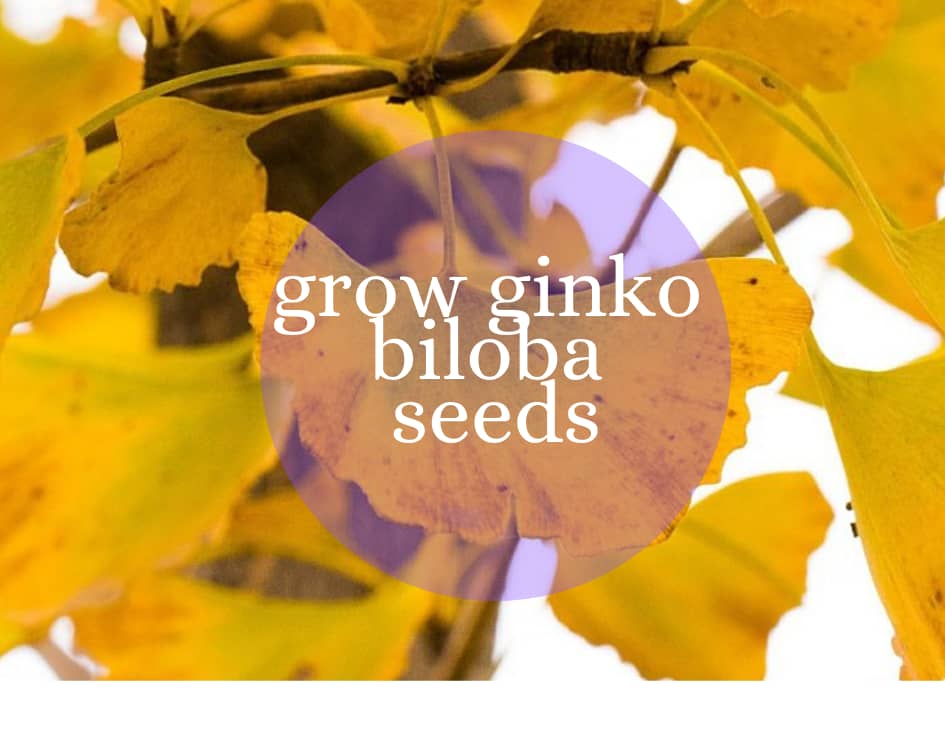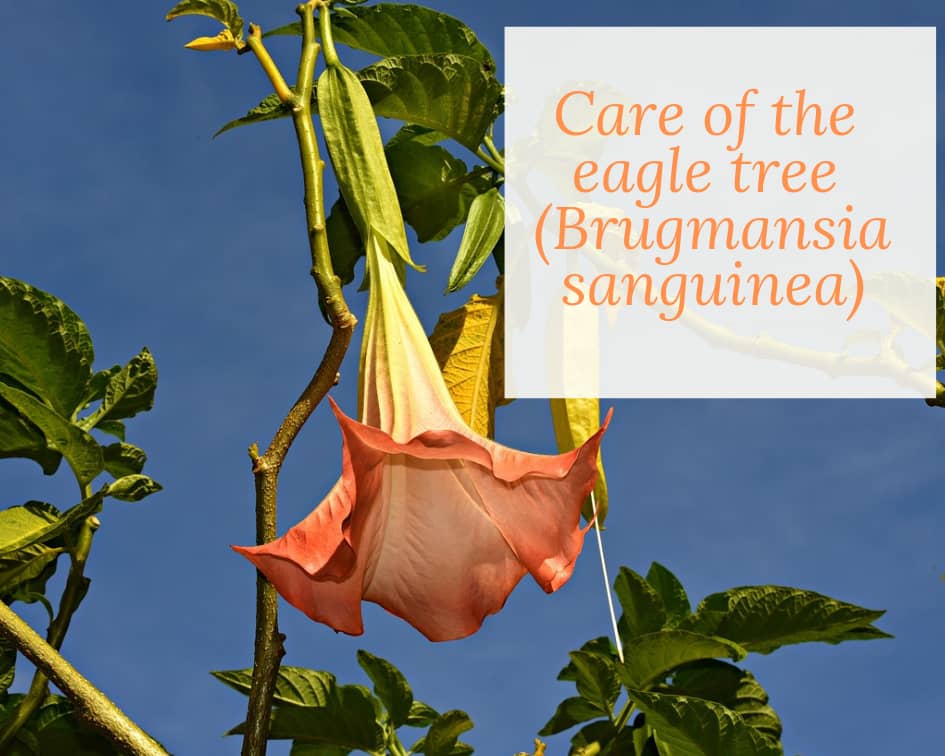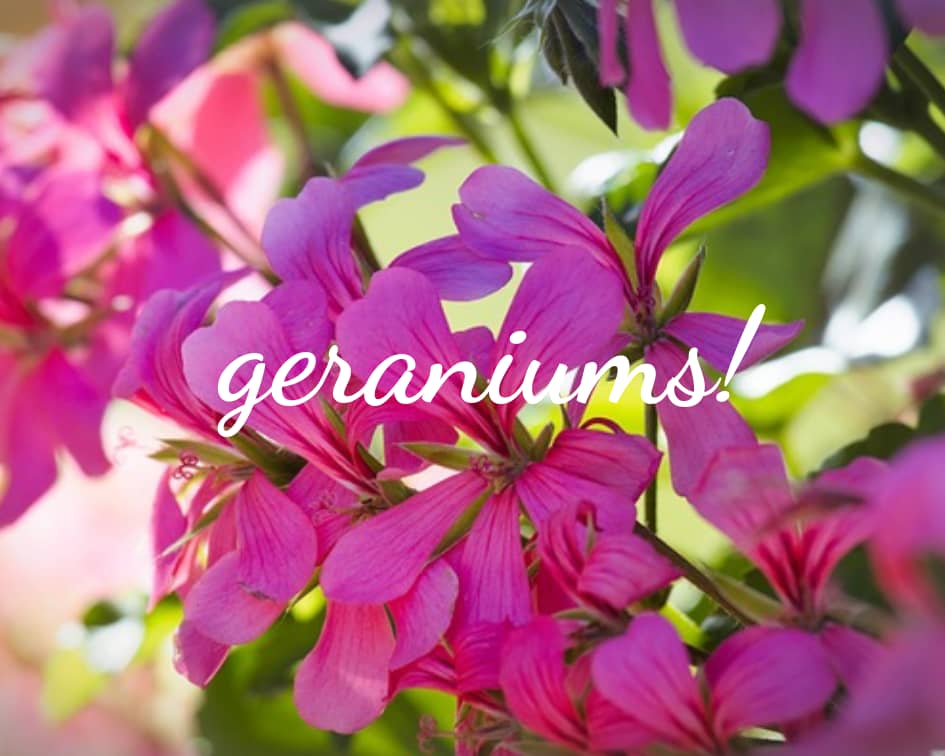This post may contain affiliate links. As an Amazon Associate we earn from qualifying purchases.
If you want to learn to germinate ginkgo biloba seeds, read on!
Just think: When you stick those ginkgo biloba seeds into the soil to germinate, you’ll be starting trees that trace their “roots” back 270 million years, making them among the oldest living species on the planet.
They live a long time too: there’s a ginkgo biloba in Asia that is estimated to be 3,000 years old. Ginkgo is a large tree so make sure you have the room for it. Hopefully you do because this tree is a stunner.
Germinating ginkgo biloba seeds, while fun and interesting, requires lots of patience. It won’t be sexually mature until it is 30 years of age. At that time it will produce seeds.
You could also buy a starter tree to shave a few years off that timeline.
Hey, think of it this way: your kids can have the benefit of your labor! If you want to kick start the process, skip the germination and purchase a tree that’s already growing.
What you’ll need to germinate ginkgo biloba seeds
- Latex or rubber gloves
- Peat moss
- Plastic sandwich bag that seals
- Sandpaper
- Bowls
- 4-inch planting pot
- Coarse sand, coarse sand and perlite or Foxfarm Ocean Forest Potting Soil
- Household bleach
- Fine mesh strainer or sieve, optional
- Paper towels
Prepare the ginkgo biloba seeds for germination
You might want to put on a pair of latex gloves because you need to mix the following concoction with your hands.
Pour some peat moss into a bucket and add a small amount of water. Your aim here is to be able to form a ball of peat that will hold its shape. You will need two handfuls of moist peat so keep adding peat and water until you get there.

Put the two handfuls of the peat into a plastic sandwich bag — the type with a zip-lock closure. Drop five ginkgo seeds into the bag, close it and set it aside in an area that remains around 68 degrees Fahrenheit and where it won’t be disturbed.
Keep checking it to ensure that the peat remains barely moist and, after one to two months, put the bags of peat/ginkgo biloba seeds in the refrigerator and allow them to remain there for another one to two months. This process is known as “stratification.” Basically, it imitates what the seeds would go through in nature.
Planting your gingko biloba seeds
When the stratification period is over, remove the gingko biloba seeds from the bag and lightly sand the seed coat — not too much, just enough to allow moisture to penetrate. Drop them into a bowl of water and let them sit for 24 hours.
The next day, fill a 4-inch planting pot with coarse sand, or a mixture of equal parts of coarse sand and perlite. If you’re up for trying something else, I highly recommend Foxfarm Ocean Forest Potting Soil.
Run water over whichever medium you’ve chosen until it’s drenched and water drains from the bottom of the pot. Set it aside to drain completely while you sterilize the seeds.
Make a solution of 9 parts of water and 1 part of household bleach and toss the gingko biloba seeds into a bowl of the solution. Allow them to sit in it for about 10 minutes and then remove them and rinse with clear water (a strainer comes in handy here). Use paper towels to blot them dry.
Plant the ginkgo seeds very shallow – just barely cover them with sand. Place the pots in a bright area but out of direct sun, indoors, keep the soil moist but not wet and your ginkgo biloba seeds should germinate within three weeks.
If you prefer, you can plant the seeds outdoors, without stratification, in fall and “good germination should take place in spring,” according to Michael A. Dirr and Charles W. Heuser, Jr. in The Reference Manual of Woody Plant Propagation (the bible for plant propagators and a book I highly recommend).
If you decide to germinate with stratification, wait until there is absolutely no danger of frost before hardening the seedlings off and then planting in spring.

Germination of fresh ginkgo biloba seed
If you’ll be gathering seeds from an existing tree instead of purchasing them you’ll need one more piece of equipment, a bucket, so add it to the list above.
The first thing you need to know is that the soft outer layer that surrounds the seed is disgustingly smelly when it decays. Not only that, but touching it may cause dermatitis and even nausea, so wear latex or rubber gloves at all times when working with ginkgo seeds. Even the seed itself may retain traces of a substance that causes the same skin problems as poison oak and ivy. At least in some people (got an email from someone saying he never has a problem).
Fill a bucket with water, submerge the fruit and squeeze the seeds from it. Wash each seed and then dry them. The seeds are now ready to be stratified and planted, as outlined above.




Is there any way to determine sex of tree other than at maturity, or by buying one? I’ve had friends years ago that supposedly purchased a “female” tree to avoid fruiting, but they now have tons of fruits from their supposedly non-fruiting tree.
Hi Robin,
There is a way to tell. The males produce cones, the females don’t. George Weigel, certified horticulturist and garden writer claims that, as baby trees, “the male part looks like a tiny cone right off the bat. Females send up slender green shoots along with the new leaves.” He also links to very cool photos to help you out: http://www.wcisel.com/plants/ginkgobiloba/index.htm Click on the photos to enlarge them.
If you want to make it easier on yourself, purchase the ‘Autumn Gold’ cultivar — it’s grafted, and always male. I found some for sale at Amazon.com but the reviews weren’t very good. To ensure you’re getting the right one, if you order online, do so from a reputable source, such as FastGrowingTrees.com. If you can find it locally, that’s even better. Most nurseries have a return policy, although it’s typically within one year.
Thanks for the question!
Could you specify the type of bleach commonly available to you? Or alternative sterilizing methods? At my location the *traditional” type of bleach is no longer available, so there are several alternative products which i hesitate to use on my gingko seeds for fear of harming them
Just household bleach from the supermarket is fine. I read somewhere that one man used hydrogen peroxide. If all else fails, just skip the sterilizing part. I often read university studies that don’t sterilize at all. The problem is that the seed is notorious for attracting mold. Best of luck!